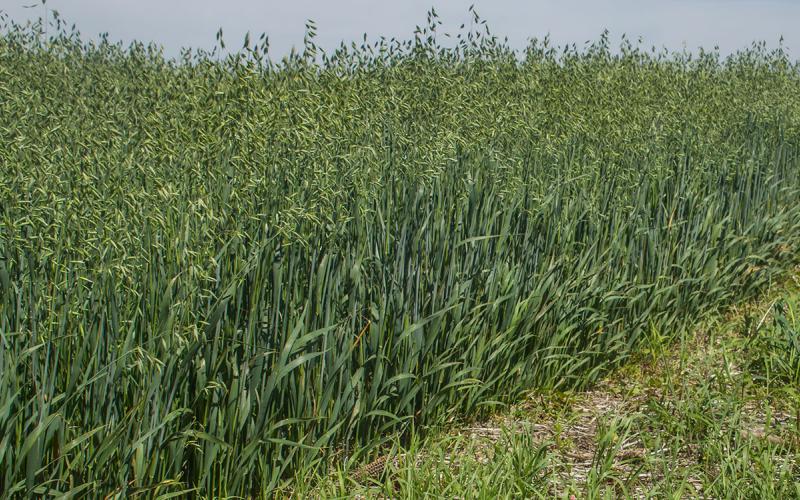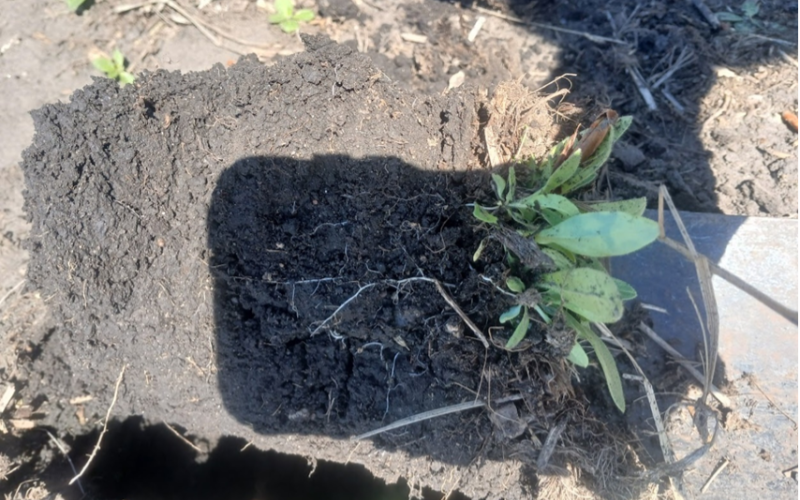During the past several weeks, last year, and previous years, incidents of soil blowing from agricultural fields have been more frequent. Many would like to know why this is occurring. Most remember pictures of the “Dirty Thirties” as a time when the soil blew and associate it with the drought years that occurred then. Those extreme droughts have not occurred recently. Admittingly, the drought monitor has shown drought in South Dakota over the past few years, but if one really looks at the impacts on crop productivity, NASS records show small decreases in average yields across South Dakota. The droughts of the “Dirty Thirties” were much worse and widespread.
What causes soil to blow?
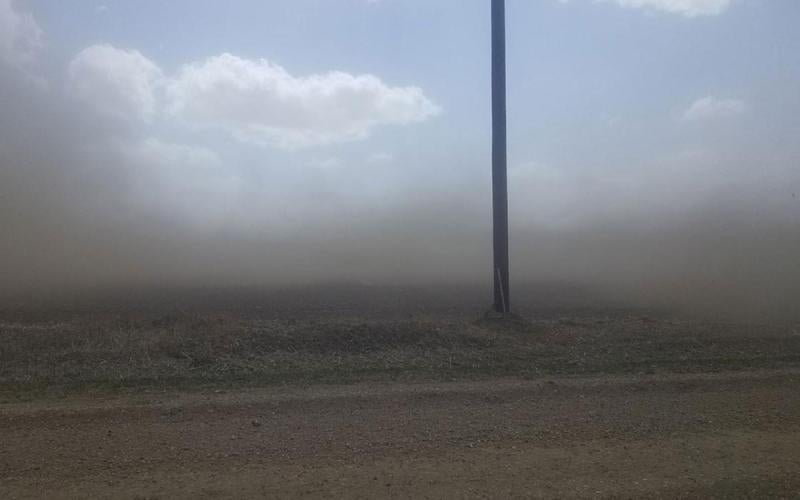
So why has the soil been blowing lately? Let’s review the factors causing the soil to blow.
- The soil surface is un-protected by previous crop residues.
- The soil surface is smooth.
- Soil structure has been degraded by intensive tillage.
Currently, tractor power and size of tillage implements has greatly increased, and therefore, degradation of soil structure is greater now than ever before. The practices that destroy and remove crop residues leave the soil unprotected. Smoothing the field with secondary tillage equipment and rollers leaves the soil surface smooth and very prone to wind scouring. Soil particles smaller than 0.033 inches are most susceptible to wind erosion (Chepil 1950). The soils that are the most susceptible to wind erosion are ones that have higher amounts of fine sand and low organic matter. However, practices that destroy soil aggregates, such as intensive tillage and rolling, reduce the mean size of dry aggregates near the surface and can make productive soils (loamy textures with high organic matter) susceptible to wind erosion. This creates more soil aggregates that are susceptible to wind erosion. Having a longer area in the field also increases soil erodibility. Windbreaks previously were planted to help reduce wind erosion and field length. As machinery has increased, many of the windbreaks have been removed. Even if the soil is, for the most part, wet, having just a small amount of dry soil near the surface can lead to wind erosion. High winds can dry the soil close to the surface rapidly. If the winds are high enough, even soil at intermediate water contents can blow.
What about drought?
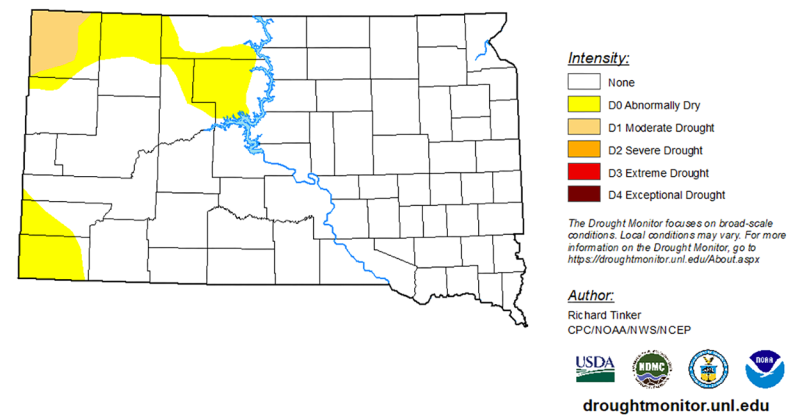
How dry does the soil need to be before it blows? A recent weather pattern resulted in many days with high wind activity throughout South Dakota.
A key piece of evidence in the latest wind erosion events is that the drought monitor map (rendered June 11, 2024 by the National Drought Mitigation Center) shows little to no drought for most of the state (Figure 1).
Fields with blowing soil lately have caused severe crop destruction by scouring the plants (Figure 2).
Investigating the soil profile showed mucky wet soil starting at about an inch below the surface (Figure 3).
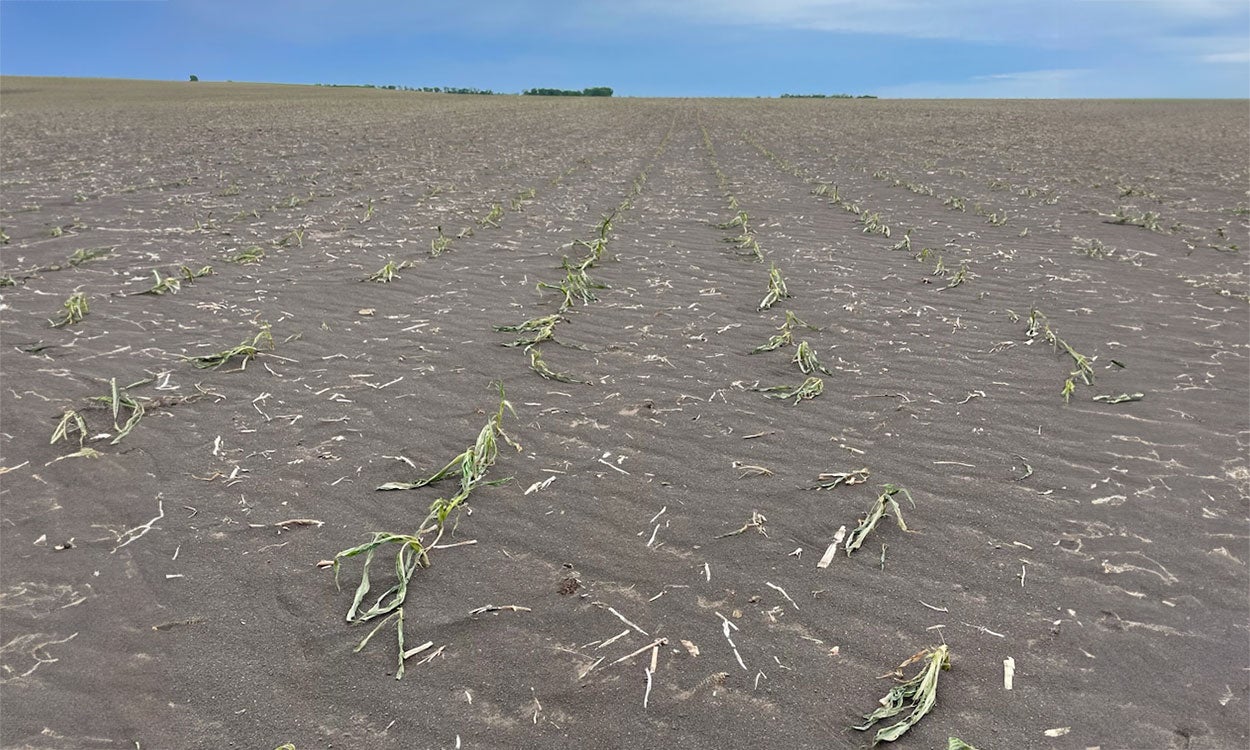
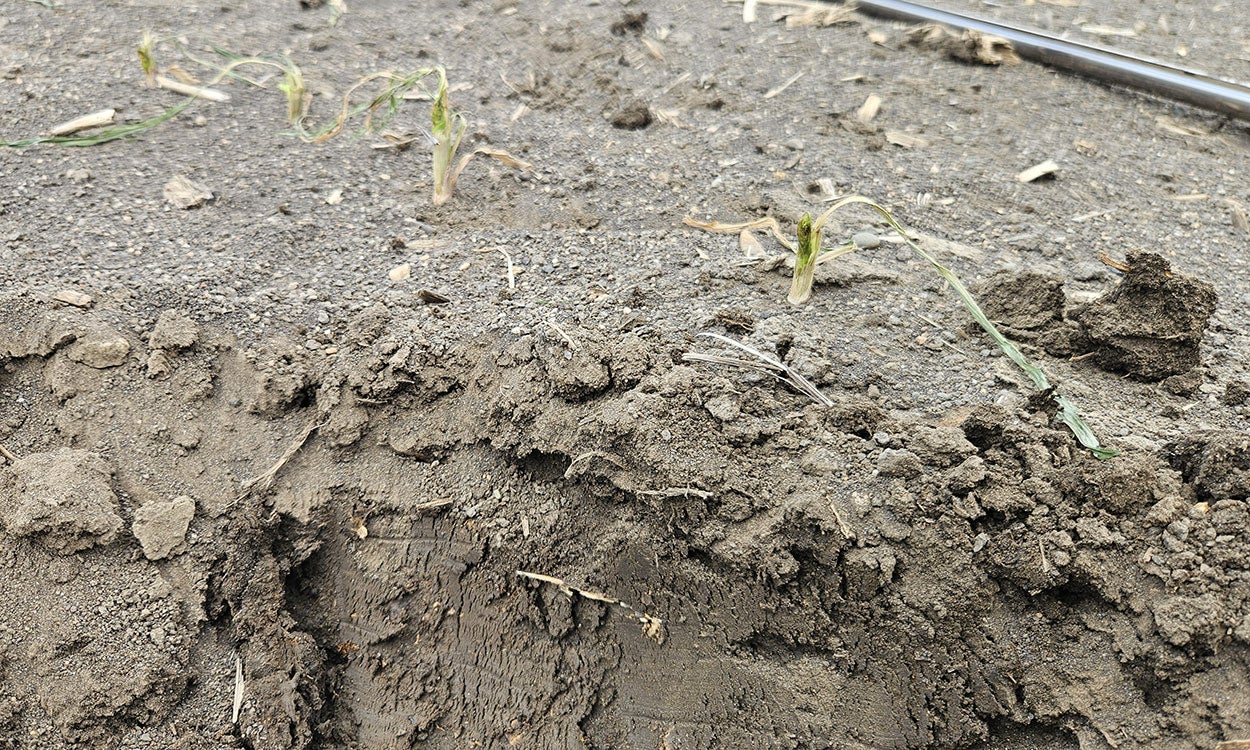
In Summary
To keep soil from blowing, consider the following:
- Keep the soil surface protected by leaving crop residues in the field.
- Don’t smooth the field, which leaves old crop residues pointing upward.
- Reduce or eliminate tillage.
- Plant cover crops if a planned crop is removed for feed or if crop residues are removed.
Reference
Chepil, W.S. 1950. Properties which influence soil wind erosion: 2 Dry aggregate structure as an index of erodibility. Soil Science. 69: 403-414.

